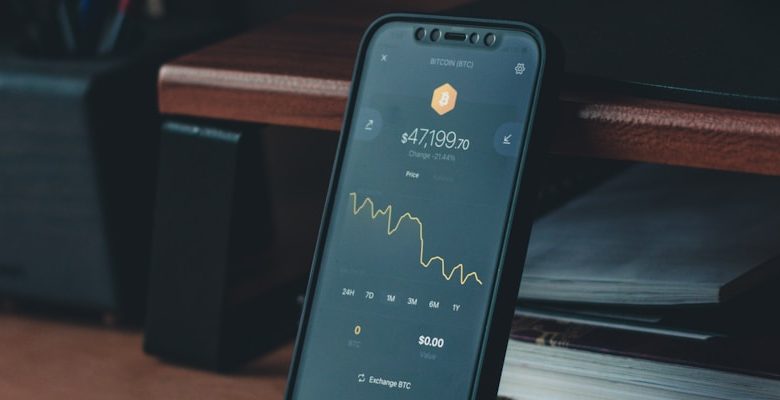The Pros and Cons of Margin Trading in Cryptocurrency

- Understanding Margin Trading in Cryptocurrency
- The Benefits of Margin Trading in the Crypto Market
- Risks Associated with Margin Trading in Cryptocurrency
- How to Safely Navigate Margin Trading in the Crypto Space
- Leverage: A Key Factor in Margin Trading
- Regulatory Challenges in Margin Trading of Cryptocurrencies
Understanding Margin Trading in Cryptocurrency
Margin trading in cryptocurrency allows investors to borrow funds in order to increase their buying power. This means that traders can potentially make larger profits, but it also comes with higher risks. Understanding how margin trading works is crucial before diving into this type of trading.
When you engage in margin trading, you are essentially borrowing money from the exchange to increase your position size. This can amplify both gains and losses. It’s important to note that while margin trading can be lucrative, it can also lead to significant losses if the market moves against you.
One key concept to understand in margin trading is the concept of leverage. Leverage allows you to control a larger position with a smaller amount of capital. For example, if you have a leverage of 10:1, you can control a $10,000 position with just $1,000 of your own capital. This means that gains or losses are magnified by a factor of 10.
Another important aspect of margin trading is the concept of margin calls. If the value of your position falls below a certain threshold, the exchange may issue a margin call, requiring you to either deposit more funds or close out your position. Failure to meet a margin call can result in the exchange liquidating your position.
Overall, margin trading can be a powerful tool for experienced traders looking to maximize their profits. However, it is important to approach it with caution and fully understand the risks involved. Proper risk management and a solid understanding of how margin trading works are essential for success in this high-risk, high-reward trading strategy.
The Benefits of Margin Trading in the Crypto Market
The benefits of margin trading in the cryptocurrency market are numerous. One of the main advantages is the potential for higher returns on investment. By using leverage, traders can amplify their profits if the market moves in their favor. This can be especially lucrative in a volatile market like cryptocurrency, where prices can fluctuate dramatically in a short period of time.
Another benefit of margin trading is the ability to diversify your portfolio without having to invest large amounts of capital. With margin trading, you can take positions in multiple cryptocurrencies without tying up a significant portion of your funds. This can help spread risk and potentially increase your overall returns.
Margin trading also offers the opportunity to profit from both rising and falling markets. By using leverage, traders can short sell cryptocurrencies they believe will decrease in value. This can be a valuable strategy in a bear market when prices are declining, as it allows traders to profit from downward movements.
Furthermore, margin trading can provide liquidity to the market by allowing traders to enter and exit positions quickly. This can help stabilize prices and reduce volatility, making the market more efficient overall. Additionally, margin trading can help increase trading volume, which can lead to tighter spreads and better price discovery.
Risks Associated with Margin Trading in Cryptocurrency
Margin trading in cryptocurrency can be a lucrative opportunity for investors looking to maximize their returns. However, it is important to be aware of the risks associated with this type of trading. One of the main risks of margin trading is the potential for significant losses. When trading on margin, investors are essentially borrowing funds from the exchange to increase their buying power. This means that if the market moves against them, they could end up owing more money than they initially invested.
Another risk of margin trading in cryptocurrency is the volatility of the market. Cryptocurrency prices can fluctuate wildly in a short period, which can lead to margin calls and liquidation of positions. This can result in investors losing a significant portion of their investment in a short amount of time. Additionally, margin trading can amplify both gains and losses, meaning that investors could potentially make more money, but they could also lose more money than they would have with a traditional trade.
It is also important to consider the potential for exchange hacks and technical issues when margin trading in cryptocurrency. Exchanges can be vulnerable to cyber attacks, which could result in the loss of funds for investors. Technical issues on the exchange’s end could also lead to missed opportunities or errors in trading, which could impact the outcome of margin trades.
How to Safely Navigate Margin Trading in the Crypto Space
When engaging in margin trading in the cryptocurrency space, it is crucial to take certain precautions to ensure the safety of your investments. Here are some tips to help you navigate this potentially risky endeavor:
- Start by educating yourself on the concept of margin trading and how it works. Understanding the risks involved is key to making informed decisions.
- Only invest what you can afford to lose. Margin trading can amplify both gains and losses, so it is important to be prepared for the possibility of losing your initial investment.
- Set stop-loss orders to limit potential losses. This will help you mitigate risk and protect your investment from significant downturns in the market.
- Choose a reputable exchange with a solid track record for security and reliability. Research the platform thoroughly before depositing any funds.
- Diversify your investments to spread out risk. Avoid putting all your funds into a single trade, as this can leave you vulnerable to significant losses.
By following these guidelines and exercising caution, you can safely navigate margin trading in the crypto space and potentially capitalize on market opportunities without putting your entire investment at risk.
Leverage: A Key Factor in Margin Trading
Using leverage in margin trading can be a key factor in maximizing potential profits. Leverage allows traders to borrow funds in order to increase their buying power and potentially amplify gains. However, it’s important to note that leverage can also magnify losses, making it a high-risk strategy that should be approached with caution.
When utilizing leverage, traders can open larger positions than they would be able to with their own capital alone. This can lead to the potential for higher returns on successful trades. However, if the market moves against them, losses can escalate quickly. It’s crucial for traders to carefully manage their risk and set stop-loss orders to mitigate potential losses.
One of the main advantages of leverage in margin trading is the ability to access a larger market with a smaller initial investment. This can provide traders with more opportunities to profit from price movements in the cryptocurrency market. However, it’s important to remember that leverage can also lead to significant losses if not used wisely.
Overall, leverage can be a powerful tool in margin trading, but it’s essential for traders to have a solid understanding of the risks involved and to use leverage responsibly. By carefully managing risk and staying informed about market conditions, traders can take advantage of leverage to potentially increase their profits in the cryptocurrency market.
Regulatory Challenges in Margin Trading of Cryptocurrencies
Margin trading in cryptocurrencies has gained popularity in recent years due to the potential for high returns. However, this practice also comes with its fair share of regulatory challenges that need to be addressed. These challenges primarily revolve around the lack of clear guidelines and oversight in the cryptocurrency market.
One of the main regulatory challenges in margin trading of cryptocurrencies is the issue of investor protection. Without proper regulations in place, investors are at risk of falling victim to fraudulent activities and market manipulation. This can lead to significant financial losses and erode trust in the cryptocurrency market as a whole.
Another regulatory challenge is the potential for increased market volatility. Margin trading allows investors to amplify their gains, but it also amplifies their losses. This can lead to sudden price fluctuations and increased market instability, which can have far-reaching consequences for both individual investors and the wider market.
Additionally, the lack of standardized regulations across different jurisdictions poses a challenge for global margin trading platforms. Without a uniform set of rules to follow, these platforms may struggle to navigate the complex regulatory landscape and ensure compliance with local laws.
In conclusion, while margin trading offers the potential for high profits, it also comes with significant regulatory challenges that need to be addressed. By implementing clear guidelines and oversight measures, regulators can help protect investors and promote a more stable and transparent cryptocurrency market.



